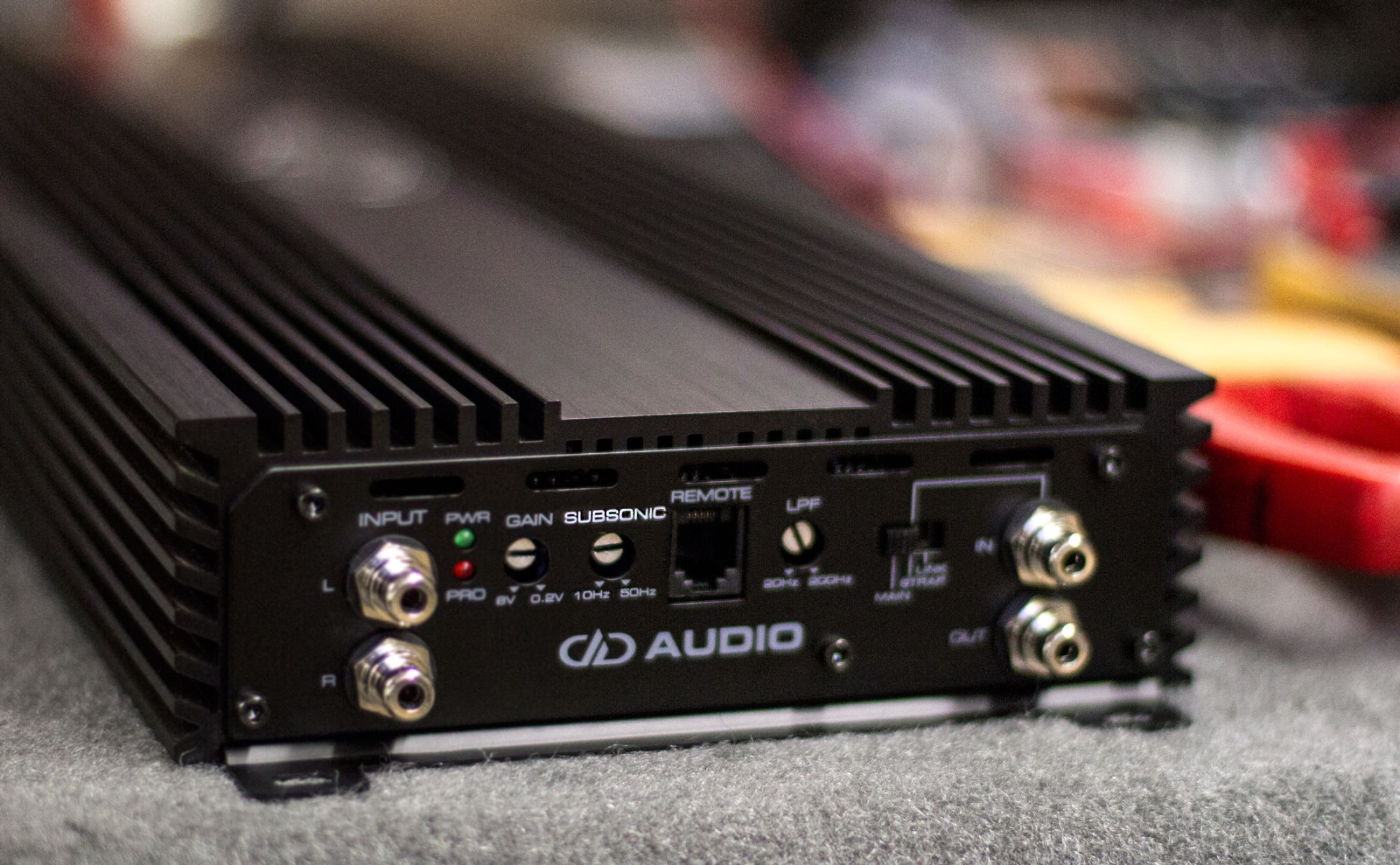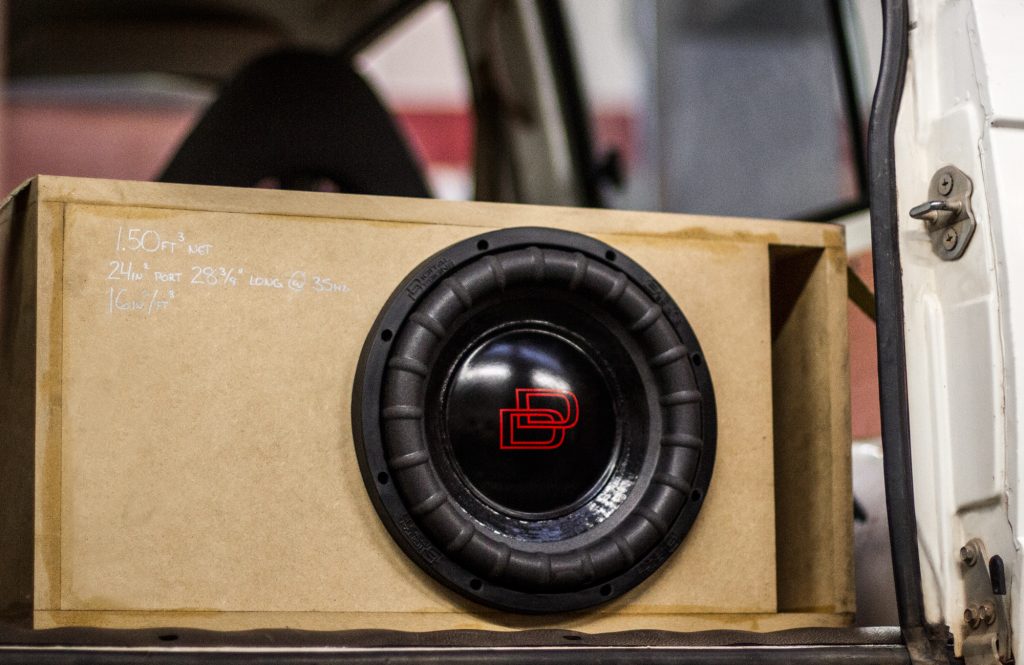
Subsonic Addiction: How Much Do You Really Hear?
DD Audio Tech Talk | WRITTEN BY AARON TRIMBLE | 02 MARCH 2017
What does the subsonic filter do exactly? A lot of folks would say it cuts out my low bass, and they wouldn’t be wrong. What few of people actually realize, if an amplifier has a subsonic filter set at 50 Hz, everything below this is not dead and gone. In fact, it’s safe to say when a filter is indeed set to 50 Hz, a frequency like 30 Hz is still quite audible, albeit quieter than it would be if the filter was not utilized at all.
This is not going to turn into an “everything below 40 Hz is wasted information” argument, nothing is wasted if one is listening to it. DD Tech Talk readers know we like the deep down nitty gritty beats as much as the next bass enthusiast, but we’re also not afraid of using our subsonic filter to optimize our systems. When talking about subsonic filters, readers may hear the term “slope” thrown around. This refers to the rate at which music will be attenuated below the subsonic filter frequency. All DD M Series and DM Series Monoblocks use 24dB/octave subsonic filters. This means a subsonic filter at 50 Hz would be 24 decibels down in amplifier output at 25 Hz, subwoofer box and vehicle transfer function notwithstanding. In all reality, the filter will probably never get set this high, but it then begs the question… how high should the filter be set?
DD R&D solicited the help of various people around the DD Headquarters to see at what point they could hear their music be affected by a subsonic filter. For this experiment we loaded up our trusty Isuzu Trooper with a 3510g ESP in a 1.5 cubic foot enclosure with 20 square inches of port, tuned to 35 Hz (the vehicle plays a good bit lower than that), and powered it off an M2c (2400 watt amp). A complement of DD door speakers and a 60 watt per channel speaker amp were included to allow for a full range listening experience.

Each listener sat in the driver’s seat and listened to music stored on their cell phones to insure that each person was familiar with their music. As they listened, a second person would turn the subsonic filter on the M2c up until the listener signaled that they could hear the difference. Here are some of the tracks that they listened to.
| Track | Position on Knob | SS Frequency |
| Set Me On Fire – Pendulum | 3:00 | 42 Hz |
| Purple Lamborghini – Rick Ross & Skrillex | 3:00 | 42 Hz |
| The Wretched – Nine Inch Nails | 2:00 | 38 Hz |
| Right Where I Need To Be – Gary Allen | 1:30 | 36 Hz |
| Give It All We Got Tonight – George Strait | 1:30 | 36 Hz |
| Blood – In This Moment | 3:30 | 44 Hz |
| Don’t Stop Believing – Journey | 12:30 | 32 Hz |
| Take A Little Ride – Jason Aldean | 3:00 | 42 Hz |
| We Will Rise – Arch Enemy | 3:30 | 44 Hz |
| Skyhunter – Dethklok | 3:00 | 42 Hz |
There’s pretty wide range of music that was played. Styles range from country music to Cartoon metal bands, all the way back to British drum and bass, and dubstep. Consistently, most listeners were incapable of discerning the difference between a subsonic filter set at 20 Hz and one set near 30 Hz. Most folks had a hard time perceiving output losses below about 36 Hz.
For the mainstream listener, setting a subsonic filter around 35 Hz will allow them to hear all their music content, missing nothing on any performance, while protecting their system. Our next articles will also show ways to optimize amp power and cone excursion for the listeners bandwidth.
Some of you might have read that list and said, “Yeah but I thought you guys liked bass, where is the low stuff?” Some of our listeners were big bass heads. They know who Decaf is and they roll to DJSNT, Rusticals, and all the rest on the daily. These listeners are a special breed. Bass music does not come from an instrument with strings, brass horn or 808 samples. 25 Hz doesn’t come from anything but a pipe organ, and most of us have never been to a car audio competition and demo’d someone’s ride while listening to a Wurlitzer Theatre Pipe Organ collection. Bass music is primarily digitally modified sine-waves being injected into other music, and it should be treated in it’s own special way. Check out some of our listening testing with slowed and modified tracks.
| Track | Position on Knob | SS Frequency |
| Delusional – Tech N9ne (DJSNT) | 10:30 | 24 Hz |
| How You Do That – Master P ft Young Blood (29-42 Hz) | 11:30 | 28 Hz |
| Lil One – Dirty Sprite 2 (35 Hz) | 11:00 | 26 Hz |
| Pop The Trunk – Yelawolf | 11:30 | 28 Hz |
| My Hooptie – Sir Mix-A-Lot (27, 34, 41 Hz) | 11:00 | 26 Hz |
Here, users listening to slowed music noticed the subsonic filter kicking in much sooner. Tracks with heavy doses of modified sine wave frequencies will be affected earlier, much as it would if using the DD app frequency generator, as the corner frequency of the SS filter enters the peak of the sine wave frequency.
The purpose of this experiment was to see how high the filter could be set before a listener became aware that their music’s bass was being reduced. From here we can branch out and look at the electrical and mechanical side of the equation. How much subsonic filter is needed to keep a woofer in control and how much is needed to maximize output while minimizing clipped signal. Be sure to check in with the Tech Talk next time when we delve into the how the subsonic filter saves your amp, your sub and makes your system play louder.
Don’t Settle for Average. Upgrade Your Sound™
